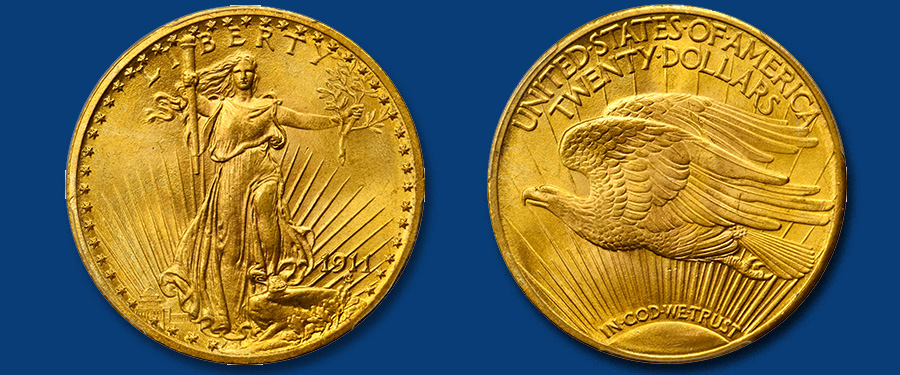
With only 197,250 pieces produced, the 1911 Saint-Gaudens double eagle has one of the lowest mintages among circulation strike issues of the entire series. However, perhaps more important than the original mintage is how many coins actually survived the meltings of the 1930s. It is likely that just 4,000 to 8,000 1911 double eagles remain in all Mint State grades today. The vast majority are in grades of MS-60 through MS-64, including a large portion of the Mint State examples that have been repatriated from European bank hoards in recent decades.
We are thrilled to offer an exceptional Gem survivor from this issue in our June 2020 Baltimore Auction. Certified MS-66+ (PCGS) and approved by CAC, it surely ranks among the most desirable 1911 $20 pieces known.
It displays warm orange-gold patina and both sides show full mint frost. The striking detail is razor sharp throughout, while the surfaces are as nice as would be expected for the assigned grade and look nearly pristine. Worthy of the most advanced collection, this sparkling Gem is tied with three other coins for second finest graded by PCGS; just one is ranked finer at MS-67. It is also tied with three other coins at the very top of the CAC Population Report, emphasizing its superior quality.
We previously sold a coin graded MS-67 (NGC) for $34,000 in our August 2012 Philadelphia Sale. Shortly after that, we sold an MS-66 (PCGS) CAC for $42,300 in our January 2013 Sale. This MS-66+ example is the finest we have presented at auction in quite a while.
The present MS-66+ (PCGS) CAC 1911 double eagle will be a featured highlight of our June 2020 Baltimore Auction, offered alongside Vermont coppers from the Q. David Bowers Collection and many other rarities. We are accepting consignments to this exciting event through April 21st, so contact us today at Consign@stacksbowers.com or 800-566-2580 to speak with a numismatic expert. Also, download our mobile app to view and participate in our auctions via your Android or Apple device.





